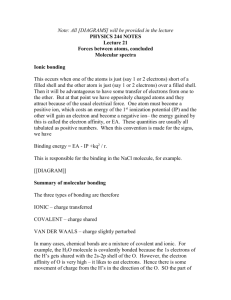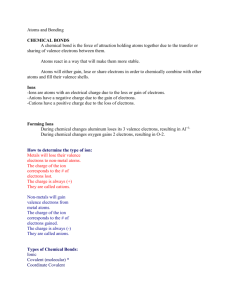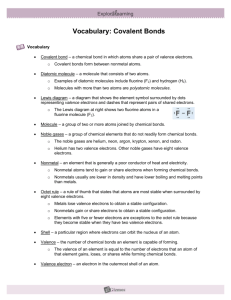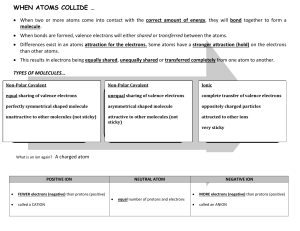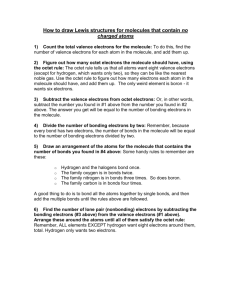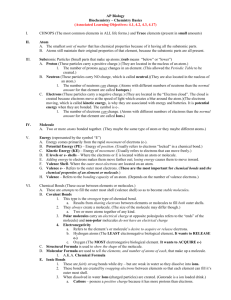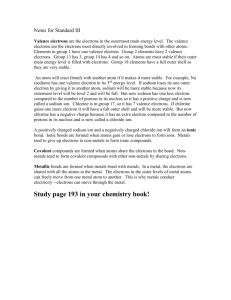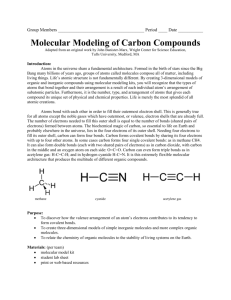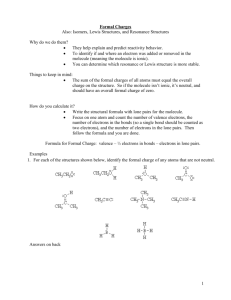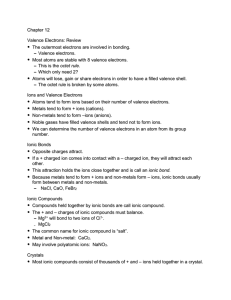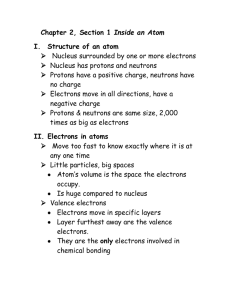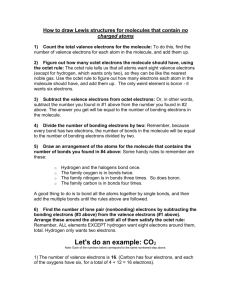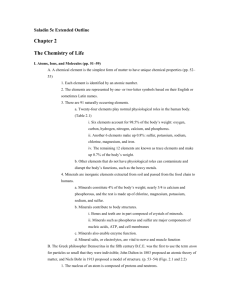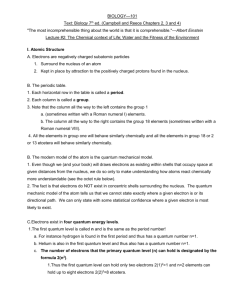Chapter 5 Atoms and Bonding b c b d b c b a d b alloys eight
advertisement
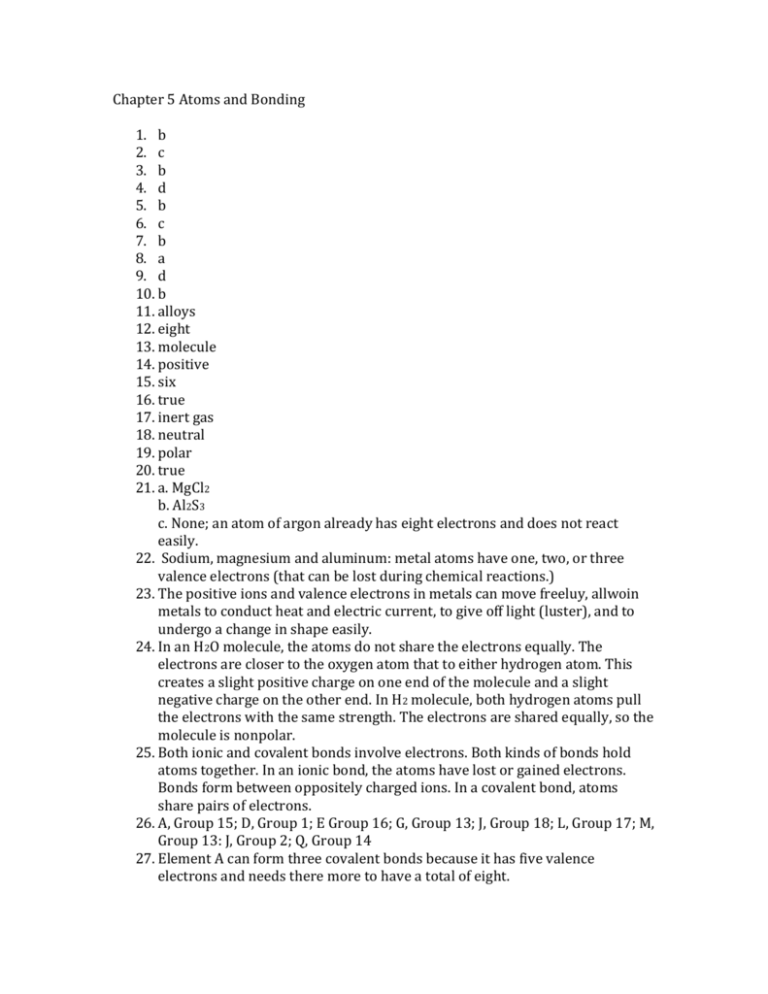
Chapter 5 Atoms and Bonding 1. b 2. c 3. b 4. d 5. b 6. c 7. b 8. a 9. d 10. b 11. alloys 12. eight 13. molecule 14. positive 15. six 16. true 17. inert gas 18. neutral 19. polar 20. true 21. a. MgCl2 b. Al2S3 c. None; an atom of argon already has eight electrons and does not react easily. 22. Sodium, magnesium and aluminum: metal atoms have one, two, or three valence electrons (that can be lost during chemical reactions.) 23. The positive ions and valence electrons in metals can move freeluy, allwoin metals to conduct heat and electric current, to give off light (luster), and to undergo a change in shape easily. 24. In an H2O molecule, the atoms do not share the electrons equally. The electrons are closer to the oxygen atom that to either hydrogen atom. This creates a slight positive charge on one end of the molecule and a slight negative charge on the other end. In H2 molecule, both hydrogen atoms pull the electrons with the same strength. The electrons are shared equally, so the molecule is nonpolar. 25. Both ionic and covalent bonds involve electrons. Both kinds of bonds hold atoms together. In an ionic bond, the atoms have lost or gained electrons. Bonds form between oppositely charged ions. In a covalent bond, atoms share pairs of electrons. 26. A, Group 15; D, Group 1; E Group 16; G, Group 13; J, Group 18; L, Group 17; M, Group 13: J, Group 2; Q, Group 14 27. Element A can form three covalent bonds because it has five valence electrons and needs there more to have a total of eight. 28. The alkali metals have only one valence electron, which is easily lost. As a result, alkali metals are very reactive and will easily combine with other elements to form compounds. 29. Try dissolving the solid in water. Then test again to see if the solution or the liquid will conduct electricity. You could also try to melt the solid. If it melts easily (at temperatures that are reasonably achievable), it is possibly a molecular compound rather that an ionic compound. 30. The opposite ends of polar water molecules are attracted to each other. This means that a higher temperature is required to provide enough energy for the molecule to separate from one another. Carbon dioxide is composed of nonpolar molecules, so there is less attraction between these molecules and less energy is needed to separate molecules from one another, allowing them to become gas.
